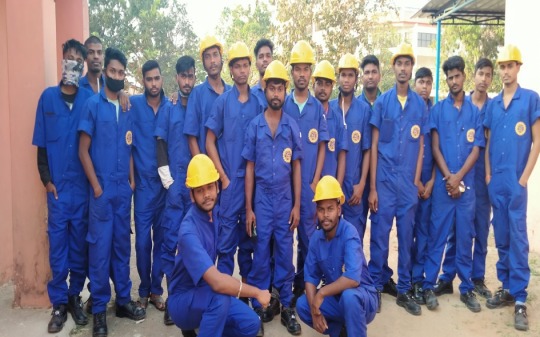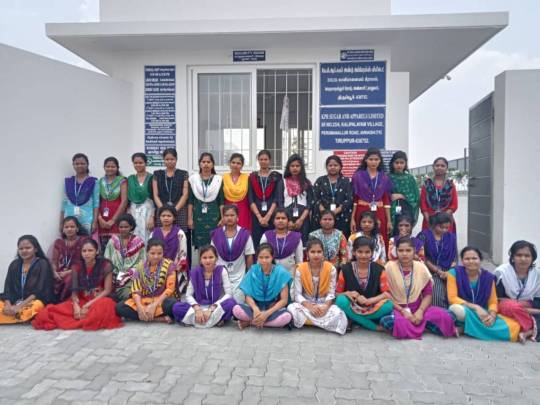Text
10 Simple Ways to Conserve Water in Your Home
Water is one of the most important resources on our planet. Yet, according to the World Wildlife Fund, over 1.1 billion people worldwide lack access to clean water, and this number is expected to rise in the coming years. Therefore, it is essential that we all do our part in conserving water, especially in our homes. In this article, we will provide you with 10 simple ways to conserve water in your home and help preserve this precious resource for future generations.

Table of Contents
Introduction
Fix Leaks Immediately
Upgrade to Water-Efficient Fixtures
Shorten Your Showers
Turn off the Tap When Brushing your Teeth or Shaving
Only Run Full Loads in the Dishwasher and Washing Machine
Collect and Reuse Rainwater
Water Your Lawn and Garden in the Morning or Evening
Use a Broom Instead of a Hose to Clean Driveways and Sidewalks
Install Low-Flow Toilets
Conclusion
FAQs
Fix Leaks Immediately
One of the most significant sources of water waste in the home is leaky faucets and pipes. A dripping faucet can waste up to 20 gallons of water per day, while a leaking toilet can waste up to 200 gallons per day. Therefore, it is important to fix leaks as soon as they are detected. Check for leaks regularly and repair them immediately.
Upgrade to Water-Efficient Fixtures
Another way to conserve water is to upgrade to water-efficient fixtures. This includes faucets, showerheads, and toilets. Water-efficient fixtures use less water while still providing the same level of performance. For example, a low-flow showerhead can save up to 2.5 gallons of water per minute.
Shorten Your Showers
A typical shower uses about 2.5 gallons of water per minute. Therefore, shortening your showers can significantly reduce your water usage. Try to limit your shower to five minutes or less. This will not only conserve water but also save you money on your water bill.
Turn off the Tap When Brushing your Teeth or Shaving
Another easy way to conserve water is to turn off the tap when you're brushing your teeth or shaving. Leaving the tap running can waste up to two gallons of water per minute. Instead, fill a cup with water for rinsing or turn off the tap while brushing your teeth or shaving.
Only Run Full Loads in the Dishwasher and Washing Machine
Dishwashers and washing machines use a lot of water. Therefore, it is important to only run them when you have a full load. This will not only conserve water but also save you money on your energy bill.
Collect and Reuse Rainwater
Collecting rainwater is an excellent way to conserve water in your home. You can use rainwater for watering your lawn and garden or washing your car. Simply install a rain barrel under your downspout to collect the rainwater.
Water Your Lawn and Garden in the Morning or Evening
Watering your lawn and garden during the hottest part of the day can lead to water waste. This is because the water will evaporate before it has a chance to soak into the soil. Therefore, it is best to water your lawn and garden in the early morning or late evening when the temperatures are cooler.
Use a Broom Instead of a Hose to Clean Driveways and Sidewalks
Using a hose to clean your driveway or sidewalk can waste a lot of water. Instead, use a broom to sweep away the dirt and debris. This will not only conserve water but also give you some exercise.
Install Low-Flow Toilets
Toilets are one of the largest consumers of water in the home. An older toilet can use up to 7 gallons of water per flush, while a newer, low-flow toilet uses as little as 1.6 gallons per flush. Installing a low-flow toilet can save up to 13,000 gallons of water per year, per person.
Use a Pool Cover
If you have a pool, using a pool cover can help reduce water loss through evaporation. A pool cover can reduce water loss by up to 90%, which can save you a significant amount of water over time.
Fix Your Sprinklers
Sprinklers that are not working properly can waste a lot of water. Check your sprinklers regularly to make sure they are working correctly. Repair or replace any broken sprinklers, and adjust them to avoid watering sidewalks or driveways.
Compost Instead of Using a Garbage Disposal
Using a garbage disposal can waste a lot of water. Instead of using a garbage disposal, consider composting your food waste. This will not only conserve water but also provide you with nutrient-rich compost for your garden.
Use a Water Meter
Installing a water meter can help you track your water usage and identify areas where you can conserve water. By monitoring your water usage, you can adjust your habits and reduce your water consumption.
Conclusion
Water conservation is essential for the health of our planet and our communities. By implementing these 10 simple ways to conserve water in your home, you can do your part in preserving this valuable resource for future generations. Remember, every drop counts.
0 notes
Text
Navigating the Urban Jungle: Improving Livelihood in Cities
Living in the city can be a blessing and a curse. On one hand, urban areas provide individuals with access to numerous amenities, opportunities, and social connections that are not available in rural areas. On the other hand, navigating the urban jungle can be a daunting task, especially for those who are new to the city.

In this article, we will explore some strategies for improving livelihood in cities.
Understand the Local Community
Understanding the local community is an essential first step in improving livelihood in cities. This means learning about the culture, customs, and traditions of the local people. It also means understanding the social and economic structures of the community. By doing so, individuals can better integrate into the community and find opportunities that may not be immediately apparent.
Develop a Support Network
Building a support network is critical for success in the city. This can include friends, family, and colleagues, as well as local organizations and businesses. Developing strong relationships with these individuals and organizations can provide individuals with a sense of belonging and access to resources and opportunities that may not be available otherwise.
Utilize Public Transportation
Public transportation is a vital component of life in the city. Whether it be buses, trains, or subways, using public transportation can save individuals time and money while reducing their carbon footprint. It also allows individuals to better explore the city and access opportunities that may not be available in their immediate area.
Find Affordable Housing
Finding affordable housing is often one of the most challenging aspects of living in the city. However, there are strategies that individuals can use to find affordable housing. This can include looking for shared living spaces, renting a room instead of an entire apartment, or moving to an up-and-coming neighborhood.
Pursue Education and Training
Pursuing education and training is an excellent way to improve livelihood in cities. This can include enrolling in college or trade school, taking online courses, or attending workshops and seminars. By doing so, individuals can develop new skills and knowledge that can lead to better-paying jobs and more significant opportunities.
Get Involved in the Local Community
Getting involved in the local community is an excellent way to improve livelihood in cities. This can include volunteering, joining a community organization or club, or attending local events. By doing so, individuals can meet new people, develop new skills, and find opportunities that they may not have known existed.
Explore the City's Green Spaces
Urban areas are often associated with concrete and steel, but many cities have beautiful green spaces that are perfect for relaxation and recreation. Whether it be a park, botanical garden, or nature reserve, exploring these areas can provide individuals with a much-needed break from the hustle and bustle of the city.
Maintain a Healthy Lifestyle
Maintaining a healthy lifestyle is critical for success in the city. This includes eating a healthy diet, getting regular exercise, and getting enough sleep. By doing so, individuals can improve their overall health and well-being, which can lead to greater success in all aspects of life.
0 notes
Text
Improving Rural Livelihood: Strategies and Programs
Rural areas face many challenges, including poverty, lack of access to basic amenities, and low levels of education and healthcare. Improving the livelihood of rural communities is crucial for the overall development of a country. In this article, we will discuss the strategies and programs that can help improve rural livelihood and uplift the standard of living of rural communities.
Understanding Rural Livelihood
Rural livelihood refers to the ways in which people in rural areas make a living and support themselves and their families. It encompasses all the activities and resources contributing to their income and well-being, including agriculture, livestock, forestry, fishing, and non-farm activities.
The livelihoods of rural communities are often vulnerable due to the lack of diversification of income sources and the dependence on a single source of income, such as agriculture. Climate change, natural disasters, and economic shocks can quickly render a rural household’s livelihood insecure.

Importance of Improving Rural Livelihood
Improving rural livelihood is essential for several reasons. Firstly, it leads to poverty reduction and increased income for rural households, which contributes to overall economic growth. Secondly, it creates employment opportunities and encourages entrepreneurship in rural areas, leading to the development of the rural economy. Thirdly, it helps to reduce migration from rural to urban areas, thereby preserving the cultural heritage of rural communities.
Strategies for Improving Rural Livelihood
Encouraging Diversification of Income Sources: Diversification of income sources is crucial for reducing the vulnerability of rural livelihoods. Governments and development organizations can encourage the development of non-farm activities such as handicrafts, small-scale industries, and tourism.
Improving Access to Finance: Finance is a major constraint for rural communities. Governments and development organizations can support the development of microfinance institutions and promote financial literacy among rural communities.
Strengthening Agricultural Production: Agriculture remains the main source of livelihood for most rural communities. Governments and development organizations can support the development of modern agricultural practices and technologies to improve agricultural productivity and reduce crop losses due to natural disasters.
Providing Skills Training and Capacity Building: Providing skills training and capacity building opportunities to rural communities can help them to improve their livelihoods and increase their income.
Developing Rural Infrastructure: Developing rural infrastructure such as roads, bridges, water supply systems, and electricity can help to improve the livelihoods of rural communities by increasing access to markets and essential services.
Programs for Improving Rural Livelihood
National Rural Livelihoods Mission (NRLM): The NRLM is a flagship program of the Indian government aimed at reducing poverty and promoting rural livelihoods. The program provides training and support for rural communities to develop their livelihoods and improve their incomes.
Grameen Bank Model: The Grameen Bank Model, developed by Nobel laureate Muhammad Yunus, is a microfinance program that provides small loans to rural communities to support their livelihoods and small businesses.
Pro-Poor Tourism: Pro-Poor Tourism is a program aimed at promoting tourism in rural areas to improve the livelihoods of rural communities. The program encourages the development of eco-friendly tourism initiatives and provides training and support to local communities to participate in the tourism industry.
Rural Enterprise Program: The Rural Enterprise Program aims to promote entrepreneurship and create employment opportunities in rural areas. The program provides training, support, and financing to rural communities to start and grow their businesses.
0 notes
Text
Discover the Power of Community Advocacy
Community advocacy is a crucial aspect of society that helps to bring about positive change and improve the lives of those living within it. When individuals come together to advocate for a common cause, they are able to use their collective voice and influence to bring about meaningful change. In this article, we will explore the power of community advocacy and how it can be used to create positive change in communities around the world.
Understanding Community Advocacy
Community advocacy refers to speaking out and advocating for a cause that benefits a particular community. It can be done by individuals, groups, or organizations, and can take many forms, including lobbying, public speaking, and organizing community events. The goal of community advocacy is to raise awareness about a particular issue and bring about change that will improve the lives of those living within the community.

The Benefits of Community Advocacy
Community advocacy has numerous benefits for both the individuals involved and the community as a whole. By coming together to advocate for a cause, individuals are able to build relationships and develop a sense of community. This can lead to increased social cohesion and a stronger sense of belonging within the community.
Additionally, community advocacy can bring about positive change in areas such as education, healthcare, and the environment. For example, advocacy efforts can lead to the improvement of local schools, the creation of new healthcare facilities, or the protection of natural resources.
The Power of Collective Action
One of the key strengths of community advocacy is the power of collective action. When individuals come together to advocate for a common cause, they are able to pool their resources and use their collective voices to bring about change. This is particularly effective when advocacy efforts are focused on a specific issue or goal, as it allows individuals to work together towards a common objective.
The Importance of Engagement
For community advocacy to be effective, it is essential that individuals are actively engaged in the process. This means participating in events and activities, such as public speaking engagements or community meetings, and using social media and other platforms to spread awareness about the cause. By being actively engaged in advocacy efforts, individuals are able to build relationships, increase their knowledge about the issue, and help bring about positive change in their community.
Building Strong Advocacy Networks
To maximize the impact of community advocacy, it is important to build strong networks of individuals and organizations that are committed to the cause. This can be done by establishing partnerships with other advocacy groups, participating in community events, and leveraging the power of social media and other digital platforms to reach a wider audience. By building strong advocacy networks, individuals are able to increase their collective impact and bring about positive change in their communities.
The Role of Leadership
Leadership is a critical component of successful community advocacy efforts. Strong leaders are able to bring individuals and organizations together, set clear goals and objectives, and provide direction and guidance to the advocacy effort. By providing effective leadership, individuals are able to work together more effectively and bring about positive change in their communities.
Conclusion
In conclusion, community advocacy is a powerful tool for positive change in communities worldwide. By coming together to advocate for a common cause, individuals are able to use their collective voice and influence to bring about meaningful change. Whether through lobbying, public speaking, or community organizing, the power of community advocacy is immense and can be harnessed to create positive change and improve the lives of those living within the community.
0 notes
Text
Contribution of Youth in Nation Building: Unlocking Their Potential
The youth is the future of every nation and their contribution to nation-building is crucial. They bring new ideas, fresh perspectives, and a zest for change that can drive progress in society. With their energy, passion, and commitment, they can help unlock the potential of a nation, pushing it toward growth and development.
Understanding the role of youth in nation building
Youth plays a significant role in shaping the future of a nation. Their involvement in various spheres of society such as politics, education, and social activism can help bring about positive change. They are the next generation's voice and have the power to influence policies and decisions that impact the future.
The Power of Youth Engagement
Youth engagement in various aspects of society has been shown to bring about positive change. They can catalyze social and economic transformation, promoting innovation and progress. By participating in political processes, youth can help shape the direction of their countries, pushing for policies that align with their values and priorities.

Education and Youth Empowerment
Education is key to empowering the youth and unlocking their potential. A strong education system that provides young people with the skills, knowledge, and confidence they need to contribute to society is essential. By equipping them with the tools they need to succeed, we can help ensure that they have the ability to bring about positive change in their communities and beyond.
Encouraging Youth Participation
To truly harness the power of the youth, it is important to encourage their participation and involvement in various aspects of society. This can be achieved through various means, including creating opportunities for them to get involved in community projects, providing mentorship programs, and promoting a culture of engagement and activism.
The Impact of Youth on the Economy
The youth can have a significant impact on the economy through their contributions to the workforce. With their innovative ideas and willingness to take risks, they can help drive economic growth and create new job opportunities. They can also play a vital role in shaping the future of industries, such as technology and entrepreneurship, by introducing new and creative solutions to age-old problems.
Conclusion
In conclusion, the youth are a vital component of society and have the power to drive progress and shape the future of a nation. By encouraging their engagement and empowering them through education and opportunity, we can help unlock their full potential and ensure that they are able to make a positive impact on the world.
#role of youth in development of india#what is child centered education#need and importance of primary education
0 notes
Text
Women Empowerment in India: Unlocking Potential
Women empowerment has been a hot topic of discussion in India for several decades. The country has made remarkable progress in empowering its women, but there's still a long way to go. Despite the efforts made by the government and various organizations, the status of women in India is still far from ideal. In this article, we'll discuss the current scenario of women empowerment in India and how to unlock their potential.
The current scenario of women empowerment in India
The current scenario of women empowerment in India is a mixed bag of positives and negatives. On one hand, India has seen a remarkable increase in the number of women joining the workforce. Women are now breaking the glass ceiling and taking up leadership roles in various fields, including politics, business, and academia. On the other hand, India still ranks low on various gender equality indices, and violence against women is still a major concern.

The need for women's empowerment in India
Women's empowerment is essential for the overall development of a country. When women are empowered, they become active participants in the economic, social, and political development of the country. They contribute to the country's growth and development and help bridge the gender gap. Women empowerment also helps reduce poverty, improve health and education, and promote gender equality.
The challenges in empowering women in India
Despite the efforts made to empower women in India, there are several challenges that need to be addressed. Some of the significant challenges include:
Lack of education and skills training: A large number of women in India are illiterate and lack the necessary skills to take up employment.
Economic dependency: Women in India are still largely dependent on men for their financial needs, making it difficult for them to become financially independent.
Social and cultural norms: The patriarchal society and cultural norms in India often restrict women's mobility and limit their opportunities for education and employment.
Violence against women: Violence against women, including domestic violence, sexual harassment, and sexual assault, is still a major concern in India.
The role of government and organizations in empowering women
The government and various organizations have been working towards empowering women in India. Some of the measures taken by the government include:
Providing education and skills training to women
Implementing laws and policies to promote gender equality and prevent violence against women
Encouraging women's participation in the workforce
Providing financial support and incentives to women-owned businesses
Several non-government organizations and civil society groups are also working towards empowering women in India. They are working on various fronts, including education, health, and economic empowerment.
Ways to unlock the potential of women in India
To unlock the potential of women in India, there are several steps that need to be taken. Some of the ways to empower women in India include:
Providing education and skills training: Education is the key to empowering women in India. Providing education and skills training to women will enable them to become financially independent and participate in the workforce.
Encouraging entrepreneurship: Encouraging entrepreneurship among women can help them become financially independent and contribute to the country's economic growth.
Breaking cultural and social norms: Breaking the patriarchal cultural and social norms in India will help women become more mobile and have access to education and employment opportunities.
Providing a safe and secure environment: Providing a safe and secure environment for women is essential for their empowerment. The government and various organizations need to work towards preventing violence against women and ensuring their safety.
Conclusion
Women empowerment is essential for the overall development of India.
0 notes
Text
Livelihood Skills Training: Boost Your Career Prospects
Livelihood skills training programs aim to empower individuals with the practical and technical knowledge required to succeed in their chosen careers. In today's rapidly changing job market, it's essential to stay ahead of the curve and keep your skills up-to-date. Enrolling in a livelihood skills training program can give you a competitive edge and boost your chances of securing a high-paying job.
What are Livelihood Skills?
Livelihood skills are the abilities and knowledge an individual needs to succeed in their chosen career. They can range from technical skills, such as coding or website design, to soft skills, such as communication and teamwork.

Why are Livelihood Skills Important for Career Success?
In today's job market, competition is fierce, and employers are looking for individuals who have a diverse range of skills. Having a strong set of livelihood skills can set you apart from other job seekers and increase your chances of securing a high-paying job. Additionally, continuing to develop your skills through training and education can help you stay ahead of the curve and stay competitive in a rapidly changing job market.
What Kinds of Livelihood Skills Training are Available?
There are many different types of livelihood skills training programs available, including online courses, certification programs, and in-person workshops.
Digital Marketing
Web design and development
Graphic design
Project management
Leadership and team building
Customer service
How can Livelihood Skills Training Boost Your Career Prospects?
Improves job prospects: By gaining new skills, you can expand your job options and increase your chances of securing a high-paying job.
Enhances marketability: Employers are more likely to hire individuals who have a diverse range of skills. By enrolling in a livelihood skills training program, you can demonstrate your commitment to continuous learning and improvement.
Increases earning potential: Individuals with solid livelihood skills are often in high demand and can command higher salaries.
Helps you stay competitive: The job market is constantly evolving, and it's essential to keep your skills up-to-date. By enrolling in a livelihood skills training program, you can stay ahead of the curve and remain competitive in the job market.
#alternative livelihoods#livelihood opportunities#livelihood programs#National Rural Livelihood Mission
0 notes
Text
Need and importance of primary education | BIPF - Odisha
Every child has the right to quality education. BIPF works to realize this right by working in areas where access to quality education is limited or non-existent. BIPF’s education intervention framework includes working alongside government schools; improving their existing infrastructure; building teaching capacity, and equipping them with supplies needed to create a vibrant learning environment where children can thrive and reach their potential. In addition to this, the foundation has also instituted a number of merits and need-based scholarships for students pursuing higher education, in particular, young women. Adult literacy has also become a focus area of the foundation and it has set up Adult Education Centers, primarily meant to achieve basic literacy skills, particularly for the women in the villages.

#what is child centered education#problem of education in slums in india#changes in education system in india
0 notes
Text
Barriers to female education in India | BIPF - Odisha
Individual health is the foundation of a productive life, a vibrant community, and a healthy nation. Driven by the core belief in ‘Health For All’, BIPF’s health division undertakes projects which focus on providing quality primary health care to communities in underserved and unserved areas. BIPF’s program interventions range across providing healthcare infrastructure by way of clinics/ healthcare centers; frequent inoculation drives; behavioral change campaigns; and strengthening the medical center through medical equipment support. Awareness building through regular health-centric communication, embedded in the community context, is a key part of all program interventions.

#changes in education system in india#young women entrepreneurs in india#essay on fundamental rights and duties
0 notes
Text
Role of youth in national development
Bansidhar & Ila Panda Foundation (BIPF) was established in 2011 as the social development arm of Indian Metals and Ferro Alloys Limited (IMFA). BIPF believes that transforming individual lives, amongst the most marginalized communities in Odisha, will have a cascading impact on the regional development of the state. Working closely in collaboration with the central and state government, local and international organizations, and other strategic partners, BIPF drives results in five core areas of transformation: healthcare, livelihood, education, water & sanitation, and advocacy and appreciation. The foundation’s approach is built on collaborating with partners, embedding community ownership in all programs, focusing on women and youth, and changing mindsets by driving behavioral change communication. This approach is integrated into all the projects. Currently, the foundation’s geographic focus spans five districts in Odisha, which cover nearly 200 villages.
Founded in 2011, BIPF, and has its origins in the decades-long community service carried out by the founders of Indian Metals and Ferro Alloys Limited (IMFA). Late Dr. Bansidhar Panda, the research scientist, returned from the United States and chose Therubali, a remote outpost in the erstwhile undivided Koraput district of Odisha, to embark upon his dream and IMFA came into being in 1961. Today, IMFA is a world of enterprise and innovation inspired by its founders - the Late Dr. Bansidhar Panda and the Late Mrs. Ila Panda.
Situated in the eastern state of Odisha, IMFA’s founders’ motto, “Touching Lives Beyond Business”, set the tone for working closely with local communities to empower them with initiatives in Education, Health, Women Empowerment, Skill Development, and Water & Sanitation. Today, BIPF continues to build on this legacy to carry out Corporate Social Responsibility (CSR) initiatives in a more scalable and sustainable manner, targeting mostly marginalized communities.
While it was only in 2013 that the Company Act mandated the CSR programs by corporates, IMFA and BIPF had already deployed significant resources to their focus areas. BIPF is currently working in the five districts of Odisha namely Keonjhar, Jajpur, Rayagada, Angul, and Cuttack. These are remote districts that are difficult to access, lack basic facilities, and have very limited livelihood opportunities. They are also susceptible to natural calamities such as cyclones and floods. As IMFA runs its operations from these districts, it was a natural step for BIPF to focus its developmental work in these areas.

#problems of women's education in india#role of youth in development of india#barriers to female education in india
0 notes
Text
BIPF - Odisha
BIPF established in 2011 as the social development arm of Indian Metals and Ferro Alloys Limited (IMFA) aims to improve the quality of education in India, By focusing on high-quality, low-cost, and replicable interventions to address gaps in the education system.

1 note
·
View note